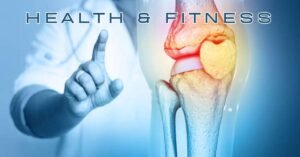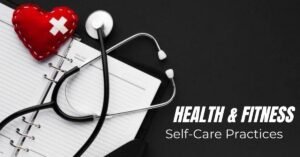The field of medicine that deals with the medical treatment of newborns, kids, teens, and young adults is called paediatrics (American English), sometimes spelt paediatrics (British English). Paediatricians treat many young people in the UK until they turn 18. Although some pediatric subspecialists continue to treat adults up to age 25, the American Academy of Pediatrics advises seeking pediatric care till age 21. Pediatric age limitations have been rising annually on a global scale. A paediatrician, or paediatrician, is a medical professional who focuses on this field.
Originating from the Greek terms παῖς (pais, which means “child”) and ἰατρός (iatros, which means “doctor, healer”), the term paediatrics and its derivatives signify “healer of children.” Clinics, research facilities, universities, general hospitals, children’s hospitals, and pediatric subspecialties (such as neonatology, which need NICU resources) employ paediatricians.
The Past
a section of the first pediatric hospital in the English-speaking world, Great Ormond Street Hospital in London, United Kingdom.
The Hippocratic Corpus, which was written in the fifth century B.C., and the well-known Sacred Disease contain the first references to medical issues unique to children. These articles covered subjects like preterm births and childhood epilepsy. Greek philosophers and physicians Celsus, Soranus of Ephesus, Aretaeus, Galen, and Oribasius also addressed particular topics between the first and fourth century AD.
Hippocrates, Aristotle, Celsus, Soranus, and Galen [6] were already aware of the distinctions between developing and maturing organisms that required distinct approaches: “Ex toto non sic pueri ut viri curari debent” means that boys should not be treated the same as men in general. In ancient India, paediatricians were known as kumara baryta, and some of the earliest evidence of paediatrics may be found there.
Due to a lack of understanding of pediatric medicine, there were few and infrequently published pediatric works during this time. The paediatrics text can be found in the sixth-century BCE Ayurvedic text Sushruta Samhita. The Kashyapa Samhita is another Ayurvedic treatise from this era. The Greek gynaecologist and physician Soranus of Ephesus wrote a text in the second century AD that addressed.
The field was influenced by Byzantine physicians Paulus Aegineta, Alexander Trallianus, Aëtius of Amida, and Oribasius. Brephotrophia (crêches) were also constructed by the Byzantines. Islamic Golden Age authors, particularly Haly Abbas, Yahya Serapion, Abulcasis, Avicenna, and Averroes, contributed their views and acted as a link between Greco-Roman and Byzantine medicine. Diseases in Children is a paediatrics book written by al-Razi (865–925), a Persian physician and philosopher who is sometimes referred to as the father of paediatrics. The Italian paediatrician Paolo Bagellardo’s Libellus [Opusculum] de aegritudinibus et Remedies Infantile 1472 (“Little Book on Children Diseases and Treatment”) was also one of the earliest books on paediatrics. Heinrich von Louffenburg, Cornelius Roelans (1450–1525) without the title Buchlein, or Latin compendium, 1483, and Bartholomäus Metlinger’s Ein Regiment der Jungerkinder 1473 followed in order.
There was little proof that children received the same level of medical care as adults, even as knowledge about juvenile illnesses increased. Medical professionals began providing children with specialized treatment in the seventeenth and eighteenth centuries. The Disorders of Children and their Treatments (1764) is regarded as “the first modern textbook on the subject,” and the Swedish physician Nils Rosén von Rosenstein (1706–1773) is credited with founding modern paediatrics as a medical speciality. However, paediatrics was not recognized by medical professionals as a distinct branch of medicine until the eighteenth century. Between the 1790s and the 1920s, the first publications devoted to children were published.
Etymology
Abraham Jacobi coined the term “paediatrics” in English in 1859. In 1860, he was dubbed “the world’s first dedicated professor of paediatrics.” Because of his numerous contributions to the discipline, Jacobi is regarded as the founder of paediatrics in the United States. After completing his medical education in Germany, he opened a practice in New York City.
The Hôpital des Enfants Malades (French: Hospital for Sick Children), which was built on the grounds of an orphanage in Paris in June 1802, is the first well-recognized pediatric hospital. This renowned hospital has been accepting patients up to the age of fifteen from its founding and is still in operation today as the pediatric division of the Necker-Enfants Malades Hospital, which was established in 1920.
Other European nations saw the establishment of distinct pediatric pavilions in 1830 at the Charité (a hospital founded in 1710) in Berlin, followed by comparable facilities in 1834 at Saint Petersburg and in 1837 at Vienna and Breslau (now Wrocław). Charles West established the first pediatric hospital in Britain, the Hospital for Sick Children, on Great Ormond Street in 1852. In Edinburgh, Scotland’s first children’s hospital opened its doors in 1860. Boston Children’s Hospital (1869) and the Children’s Hospital of Philadelphia (1855) were the first comparable facilities in the United States. Edwards A. Park established pediatric subspecialties at Johns Hopkins’ Harriet Lane Home.
The distinctions between pediatric and adult medicine
Changes in maturation occur in tandem with variations in body size. A child or neonate’s more petite body differs significantly from an adult’s in terms of physiology. Paediatricians are more concerned with developmental problems, genetic variation, and congenital impairments than adult doctors. That children are not just “small adults” is a familiar saying. When diagnosing illnesses, providing drugs, and evaluating symptoms, the doctor must remember the infant or child’s undeveloped physiology.
The pharmacokinetic characteristics of medications that enter the body are directly impacted by pediatric physiology. Children and adults have different drug absorption, distribution, metabolism, and elimination processes. Further study is required to have a better understanding of how these characteristics should influence healthcare practitioners’ decisions when prescribing and providing drugs to the juvenile population, even in the face of completed studies and reviews.
Intake
The stomach is at the centre of many of the variations in drug absorption between the pediatric and adult populations. Because they secrete less acid, newborns and young infants have higher stomach pH, which makes the environment more basic for oral medications. Certain oral medications must be broken down by acid before they can be absorbed systemically. Consequently, youngsters absorb these medications more readily than adults do.
Additionally, children’s stomachs empty more slowly, which slows down the pace at which drugs are absorbed.
Certain enzymes that come into contact with the oral medication as it passes through the body also affect drug absorption. As children’s gastrointestinal tracts continue to mature, the supply of these enzymes increases. Because of their immature proteins, children have slower metabolisms and higher serum concentrations of certain medications. Prodrugs, on the other hand, have the opposite effect since their active form cannot reach systemic circulation without the help of enzymes.
Distribution As children grow and develop over time, the percentage of extracellular fluid volume and total body water both decline. As a result, the dosage of hydrophilic medications is directly impacted by the higher volume of distribution in pediatric patients compared to adults.
Additionally, plasma proteins are lower in infants and neonates. Because they have fewer chances to attach to proteins, highly protein-bound medications are more widely distributed.
The metabolism
Drug metabolism mostly happens through the liver’s enzymes, and it might differ depending on which particular enzymes are impacted at a specific developmental stage. Depending on their particular mode of action (oxidation, hydrolysis, acetylation, methylation, etc.), phase I and phase II enzymes mature and evolve at various speeds. Children’s and adults’ metabolisms differ in a number of ways, including enzyme capacity, clearance, and half-life. Even within the pediatric population, drug metabolism might vary, distinguishing newborns and babies from young children.
Healthcare autonomy for children
The inability of children to make their own decisions, with some exclusions in most jurisdictions, is a significant distinction between the practice of pediatric and adult medicine. Every pediatric procedure must take into account the concerns of informed consent, privacy, guardianship, and legal duty. In addition to treating the child, paediatricians frequently have to treat the parents and perhaps the entire family. Teenagers belong to a separate legal class and, in some situations, are entitled to make their own decisions about their health care. When evaluating treatment options, the paediatrician must consider the wishes of several patients due to the idea of legal consent as well as the child’s non-legal consent (assent), particularly when dealing with conditions that have a poor prognosis or involve difficult and painful procedures or surgeries.

Pediatric autonomy’s past
The idea that autonomous people are capable of making judgments using their reasoning may be traced back to ethical theory and the law. The term was initially used in a medical context by Hippocrates. He established the Hippocratic Oath, a code of ethics for physicians that placed a high value on patient autonomy and the significance of prioritizing the interests of patients.
Pediatric medicine was not considered scientific or necessary by society in the past. Professional medicine was deemed inappropriate for treating youngsters by experts. Children had no rights either. Fathers were trusted to make decisions about their children’s health because they saw them as property. Consequently, the children were handled by mothers, midwives, “wise women,” and general practitioners.






